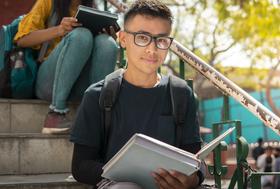The educational landscape is ever-changing, offering more opportunities than ever for high school students to get a head start on their future. One such opportunity is dual enrollment, a program allowing students to earn college credit while navigating their high school hallways. This comprehensive guide aims to shed light on dual enrollment, making it easier for parents and students to make informed decisions.
A Brief History
Dual enrollment made its debut in the United States in the 1950s. Initially, the program was designed to serve gifted and talented students by providing them with more academically challenging courses. However, over the years, dual enrollment has broadened its scope. Today, it serves diverse students, allowing them to experience college-level coursework and prepare for higher education.
How Widespread Is It?
According to the National Center for Education Statistics, approximately 15% of high school students participate in dual enrollment programs. Some states like Florida, California, and Michigan lead the pack with robust dual enrollment systems. However, the availability of these programs can vary significantly between school districts and even individual schools.
This video explains dual enrollment.
Eligibility and Admission
Students must meet specific academic prerequisites to participate in a dual enrollment program, such as a minimum GPA. In addition, some programs require teacher recommendations or standardized test scores. After completing the eligibility requirements, students typically go through an application process similar to college admissions, including submitting transcripts and potentially sitting for interviews.
With dual enrollment, you can get a head start on college credits while in high school. Classes are held in participating high schools. These courses are college-level, preselected by the high school, and take place during the school day. Contact your high school guidance counselor to learn if your high school participates in the dual enrollment Program.
If your high school does not offer your preferred courses or does not participate in the program, Bucks offers a High School Enrichment Program that may work for you.
Source: Bucks County Community College
What's Involved?
Once admitted, students can take courses at the community college either in person or online. These classes may be held during the regular school day, evenings, or weekends. Upon successful completion, students receive college credits that often transfer to other higher education institutions. Additionally, these credits can count toward high school graduation requirements.
Wake Tech's Career & College Promise (CCP) program offers eligible high school students the opportunity to earn credits toward a college degree or a credential for employment – tuition-free. Students often earn dual credit, meeting high school graduation requirements with college courses.
CCP offers students the opportunity to explore more than 40 academic programs, saving them and their families money on college tuition while lightening their future college course load. Students get a feel of the "college experience," and they can boost their admissions profile by demonstrating they are ready for the rigors of college-level classes.
For students not interested in pursuing a college degree, CCP provides a jump-start to career plans, job training, skills and certifications.
Source: Wake Tech Community College
Support Mechanisms
Most dual enrollment programs offer support services to facilitate students' transition to college-level work. These may include academic counseling, tutoring, and mentorship programs. Special orientations are often held to acquaint students with the college environment and resources.
Benefits of Dual Enrollment
- Cost Savings: One of the most attractive benefits is the potential for free or reduced tuition, making college more accessible and affordable.
- Academic Advancement: Dual enrollment can accelerate a student's academic career, allowing them to graduate college more quickly.
- Skill Development: The program can also help students develop critical soft skills, such as time management, study habits, and self-discipline, which will serve them well in college and beyond.
On average, dual enrollment positively impacts high school academics, high school graduation rates, college enrollment, college success, and college completion rates. Research on a New York City dual enrollment program found that it improved postsecondary attainment, reduced time to degree, and increased student academic performance.
Source: Department of Education
Disadvantages
However, dual enrollment has its challenges. The increased workload can lead to stress and potential burnout. There are also logistical hurdles like coordinating transportation and balancing extracurricular activities with additional academic commitments.
The dual-enrollment movement is having growing pains as issues with credit transfer arise alongside its well-documented benefits. A lot is at stake for the students who invest time, hard work, hope, and, in many cases, money in the courses they're told will produce college credit.
Source: EdWeek.org
Funding Mechanisms
The funding of dual enrollment programs varies by state and school district. Some states subsidize the cost, making it accessible for students, while others may require families to pay some or all of the tuition. Scholarships and grants may also be available to help offset costs.
Dual enrollment—students taking college credit-bearing courses when still in high school—is becoming increasingly popular. Community college programs account for about 70% of the dual enrollment that more than one million high school students participate in yearly. Yet dual enrollment can be a big financial burden for community colleges. In most parts of the country, community colleges receive less funding per dual-enrollment student than for regular, non-dual-enrollment students.
Conclusion
Dual enrollment offers a wealth of opportunities but comes with its own set of challenges. The key to making the most of this program is to weigh the pros and cons carefully and consider the individual needs and capabilities of the student. With the right approach and support, dual enrollment can be a transformative educational experience.
Questions? Contact us on Facebook. @communitycollegereview
#Dual Enrollment #High School Education #College Credit #Community College #Academic Advancement #Educational Opportunity #College Readiness #Tuition Savings















